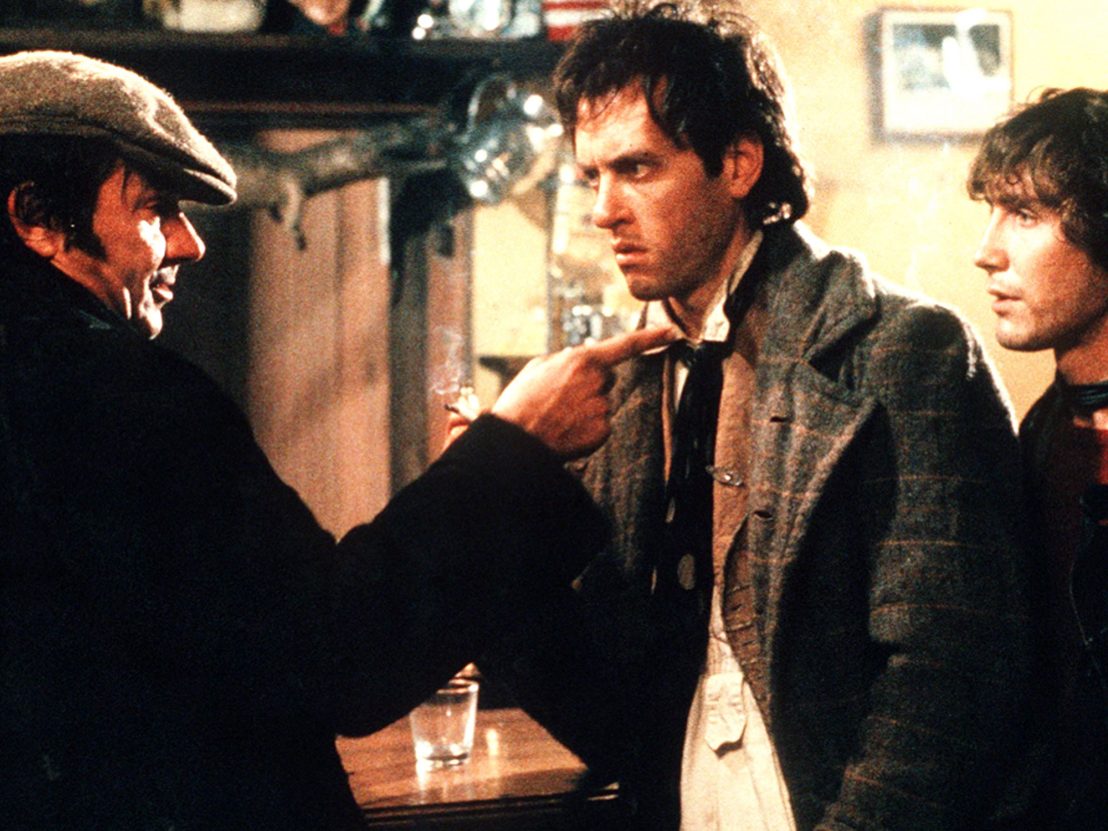
In Bruce Robinson’s 1987 film Withnail & I, locations are pivotal. The urban and the rural are at first treated as poles apart, the antithesis of each other. The latter is treated as the cure for the ills caused by the brutalities of former with its endless people and array of new concrete buildings. But Robinson’s film, following two down-and-out actors in late 1960s London, is really a satirical subversion of this divide of place.
The tough, albeit comedic, presentation of the capital is matched by an equally unforgiving rural landscape and its cast of country people. The relationship is arguably summarised best in the film’s portrayal of differing public houses, both of which are in their own way intimidating. It’s a false vision of the romantic countryside, only discoverable by those who go on holiday by mistake.
Withnail & I is a wandering narrative; a pessimistic, accidental road movie of sorts without a life affirming ending. In Camden, 1969, two jobbing actors, Withnail (Richard E Grant) and Marwood (Paul McGann), are struggling with London life. The city is coming down from the decade’s trip and acting jobs are as scarce as food.
Hungry, bored and terrified of the London around them, the pair decides to use Withnail’s family link with the rich Uncle Monty (Richard Griffiths) to spend a weekend in his house in the Lake District. But, on arriving there and finding their hectic, alcohol and drug fuelled lifestyle at odds with the countryside and the people who live there, the pair consider their own place in the decade’s crumbling array of social casualties.
The London of Withnail & I is as ramshackle as its main characters. Old houses and buildings are being torn down without a second thought, accident black spots are popping up, and even the refreshing greenery of parks (in this case Regent’s Park) do little to dispel the desperate need for drink and work. In other words, London has been battered by the decade and is coming out on the other side limping. It’s because of this sense of dilapidation that the film’s famous scene in the pub, the fictional Mother Black Cap, resonates through its grimy hostility and its scary clientele.
Considering the scene in the pub barely lasts several minutes, it’s one of the film’s best remembered and celebrated sequences. Our pair of leads finally wander into the pub for a drink after waiting all morning meandering and having minor substance induced breakdowns. Having doused his shoes in perfume after Withnail was sick on them, Marwood raises the ire of an angry Irishman (Daragh O’Malley).
Withnail drops them in it further and the pair flee when the Irishman squares up to them, even with Withnail pleading about nonexistent pregnant wives and heart conditions. We see them crash out of the pub’s doors and charge down the road under the Westway escaping danger. It’s a scene that works better onscreen rather than on the page.
The real point of this sequence is to show the supposed London that the pair are trying to escape from, a microcosm of unnamed aggression. Yet Robinson’s film is really about the fallacy of believing the countryside, and in particular its people, to be any better or more welcoming than the punters of The Mother Black Cap.
Compare this to the other pub in the film, a country pub in the Lakes that equally descends into a similar scenario, Withnail seeing himself as the better of the rural locals. In the end, they leave the rural pub under a similar cloud of threat and certainly a threat that feels far more tangible in the form of Jake (Michael Elphick), the poacher with eels in his trousers. Perhaps the pair would have fared better with the angry Irishman.

The reality of the location today is almost surreal in comparison to the film. Travelling to Westbourne Park, I wandered to the location where the pub sat on Tavistock Crescent. In perhaps one of the more depressing developments of well known London film locations, The Tavistock Arms – the real name of the pub – was demolished only a few years back in 2011. In its place, a block of luxury flats now resides, glistening with its marine-like architecture.
Even the developer behind the move admitted after the demolition that they were unaware of the pub’s cultural history. It’s only really discernible as the same location due to the rumbling monument of the Westway behind and the presence of Ernő Goldfinger’s Trellick Tower breaking the skyline; hidden in my Polaroid on the day by a tree greening for spring.
Robinson once said that he used the location due to it representing a “startling image of British despair which is why we chose it.” Walking past another pub around the corner, now closed but which had been open on my last visit to the location, it was clear that despair had taken on a new, more clean-cut image in the capital since the filming of Withnail & I; one of public spaces falling and disappearing. “They’re throwing themselves into the road gladly! Throwing themselves into the road to escape all this hideousness!” as Withnail appropriately once said.
With thanks to Polaroid Originals.
Published 23 Nov 2019

By Adam Scovell
Retracing the steps of one of film noir’s most iconic characters through the Austrian capital.

By Adam Scovell
Despite the widespread gentrification of east London, this quiet street appears much as it did in 1993.

By Adam Scovell
Visiting the southeast London estate featured in Stanley Kubrick’s 1971 film makes for a dystopian experience.